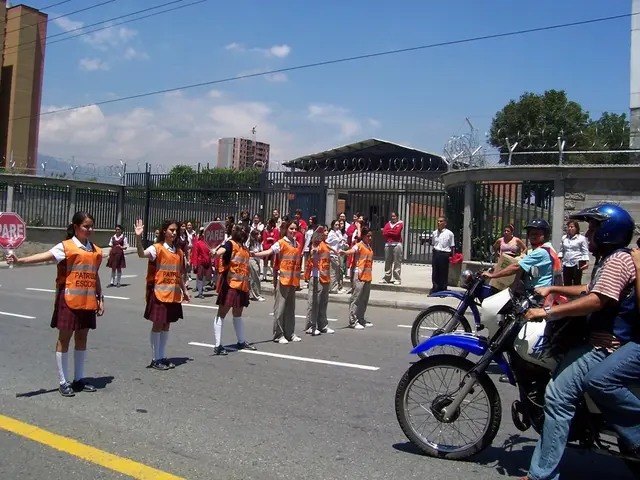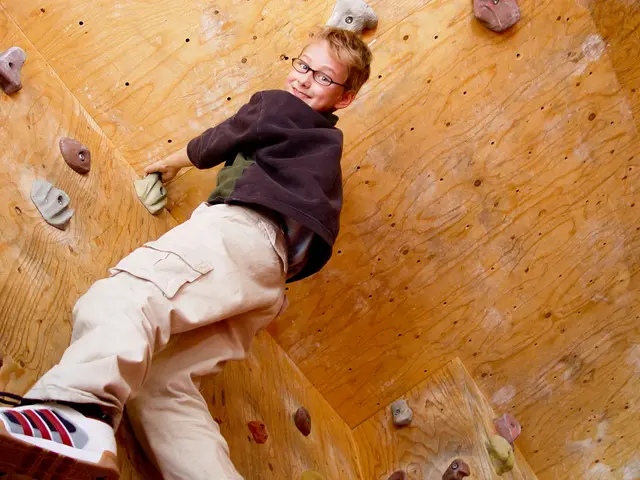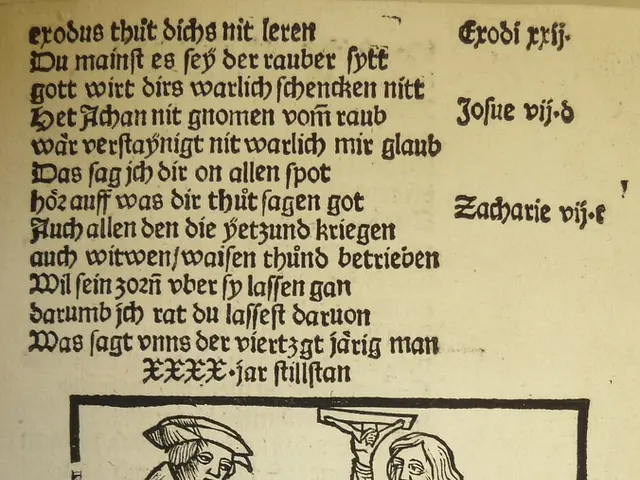Examining pedagogical approaches emphasizing errors at the Children's Museum
Every mistake? It's a golden ticket to growth. - James Joyce
In this fast-paced, result-oriented world, where we're often drilled to follow rules and perform on demand, children's museums offer a breath of fresh air. They offer the freedom to blunder, to explore, to experiment - and most importantly, to learn from it. Instead of punishment, failure is celebrated as a key component in the learning process.
At the Children's Museum, children are welcomed into a playground of possibilities. Instead of worrying about getting it right the first time, they're given permission to experience the Real-Life School of Hard Knocks. Not because we enjoy watching them stumble, but because we know that stumbling, misjudging, and trying again builds resilience, creativity, and self-confidence. As Jean Piaget once said, "Kids get it when they figure it out on their own."
The Power of a Flub
Failure, when experienced in a safe and supportive environment, is one of the most potent engines of cognitive development. Drawing upon Piaget's constructivist theory, children build knowledge through active engagement with their surroundings. Mistakes aren't setbacks; they're stepping stones.
Stanford professor Manu Kapur has demonstrated the power of productive failure - a concept that encourages students to attempt to solve problems before receiving solutions. His work shows that students who initially struggle often outperform those who receive solutions right away. In one study, Kapur found that students who engaged in problem-solving before instruction developed a deeper understanding of the concepts involved (Stanford Graduate School of Education).
Not only that, but a study published in Educational Psychologist found that mistakes activate the anterior cingulate cortex of the brain, a region associated with attention and error detection.
In early childhood, where neural plasticity is at its highest, the benefits of learning through failure are even more profound. Children develop executive functions like working memory, inhibitory control, and cognitive flexibility by facing and overcoming challenges.
Learning Laboratories Designed for Fails
At the Children's Museum, we design exhibits to provide ample opportunities for trial, error, and revision. They're not just fun activities, but carefully crafted learning environments that encourage persistence and deep thinking.
Domino Dilemmas
Children line up large domino tiles, usually misjudging spacing or angle on their first attempt. When the domino chain collapses midway, they reassess, problem-solve, and try again. It's early engineering, physics, and emotional regulation all rolled into one joyful package.
Cause & Effect Conundrums
In this expansive area filled with ramps, balls, levers, and tubes, children build complex reaction chains. Most configurations don't work on the first try, and that's the point. Children problem-solve, revise, and adapt. Each failed attempt offers more lessons than success ever could.
Kinetic Kinks
This exhibit of gears and levers is riddled with false starts. Children connect pieces that don't fit, learn through experimentation how systems work, and learn what happens when they don't.
Ball Ramp Battles
Children build ramps and test different heights, angles, and surfaces. When the ball veers off course or moves too slowly, they reevaluate. Repeated fails create an intuitive understanding of force and movement.
Windy Wonders
Children throw paper and foam shapes into a vertical air stream. Some fly, others fall. They experiment with weight, surface area, and shape, learning physics principles firsthand through feedback from failure.
Science Backs It Up
Failure not only bolsters metacognitive abilities (thinking about thinking) but also emotional resilience. According to a Harvard University report, children develop adaptive stress responses through manageable challenges that include small failures and recoveries.
The American Psychological Association reports that grit and perseverance are among the strongest predictors of adult success, and these traits develop early in life through challenging learning experiences, especially when things don't go as planned.
Carol Dweck's research on growth mindset has shown that praising effort over results encourages children to see failure not as a fixed deficiency but as a natural part of learning. In one study, children praised for their effort were more likely to persist after making a mistake than those praised for being "smart" (Mindset Works).
What Educators and Facilitators Do
In a children's museum, we educators serve as observers, supporters, and question-askers. Instead of jumping in immediately to fix things, we observe, encourage, and ask questions like:
- What do you think happened there?
- What would you change next time?
- Why do you think it didn't work?
These prompts transform frustration into reflection. They shift the focus from victory to curiosity.
Museum staff are trained to recognize when a child is at the "weak point" of the challenge, where they're stretching themselves but not overwhelmed. This is when real learning happens.
What Families Observe
Parents often notice how persistent their children become when failure is seen as part of the adventure. One parent remarked, "My son spent 20 minutes trying to get the ball to hit the bell. It didn't work the first ten times, but he kept adjusting the ramp. When he finally got it, he shouted with joy. That moment was his."
Another parent shared, "My daughter usually cries when something doesn't work. But here, she kept saying, 'Let me try again.' It was incredible to see."
Failure in this context is considered safe, collaborative, and surrounded by curiosity, not shame.
Why Children's Museums are Perfect for This
Children's museums offer an ideal setting for productive failure due to their low-risk, high-choice design. These spaces are devoid of grades, scripts, and pressure to perform. Children move at their own pace, and mistakes are accepted as part of the learning process.
These spaces are also multisensory and hands-on, supporting learning through various developmental stages and learning styles. Whether a child learns by doing, watching, or touching, they can discover the secrets of the world at their own pace.
Lastly, these museums are built on trust - trust in the child's ability to learn through experience and trust in the power of play as the foundation for serious intellectual pursuits.
Encouraging Healthy Risk-taking at Home
The lessons of the museum don't have to end when you leave. Parents and caregivers can foster a love for healthy risk-taking and learning from failures at home:
- Emphasize the process over the end result ("You worked really hard on this", instead of "It's perfect!")
- Encourage reflection when something goes wrong through questions like "What did you learn from that?" or "What could you try next time?"
- Share your own failures and what you've learned from them
- Create time, space, and opportunities for open-ended play that fosters curiosity rather than focusing on specific goals
Conclusion: Fail Forward
Mistakes should not be regarded as flaws in learning but as integral parts of the learning process.
Fail Forward
Failure is a vital feature of learning. In children's museums, children are given the freedom to confidently crumble. And as they pick themselves up, they discover something far more valuable than the "right answer": they uncover their inner strength to persevere, adapt, and grow.
As educators, parents, and designers of learning environments, our responsibility is not to protect children from every fall, but to ensure that the fall's not too hard, so they get up stronger.
In the curious, chaotic, and utterly captivating rooms of the Children's Museum, every misstep is no more than the first step - the beginning of a new adventure.
Further Reading and References
- Stanford University: When Failure Leads to Learning
- Harvard Center on the Developing Child: Building Core Capabilities
- APA: Grit and Success
- Carol Dweck's Growth Mindset Research
- LEGO Foundation: Learning through Play
- Educational Psychologist: The Role of Mistakes in Learning
- Child Development: Learning through Exploration
- Households can foster a home-and-garden environment that supports growth and self-development through learning experiences, emulating the Children's Museum by designing activities that encourage trial, error, and revision, leading to Persistence and deep thinking.
- In today's world, education-and-self-development can be enhanced by adopting a lifestyle that values learning from mistakes, much like the children at the Children's Museum who build resilience, creativity, and self-confidence by experiencing the Real-Life School of Hard Knocks, transforming failures into stepping stones for growth.








